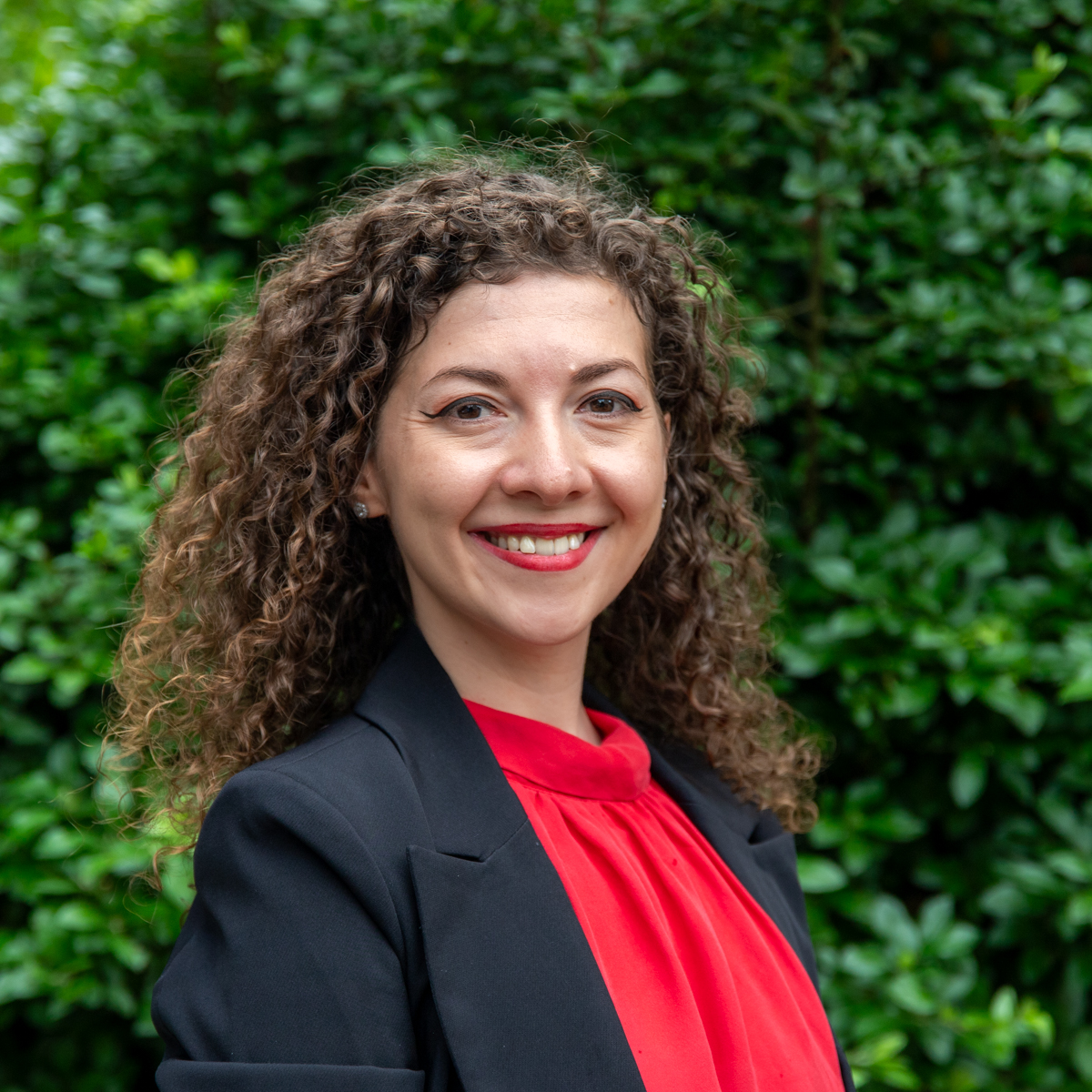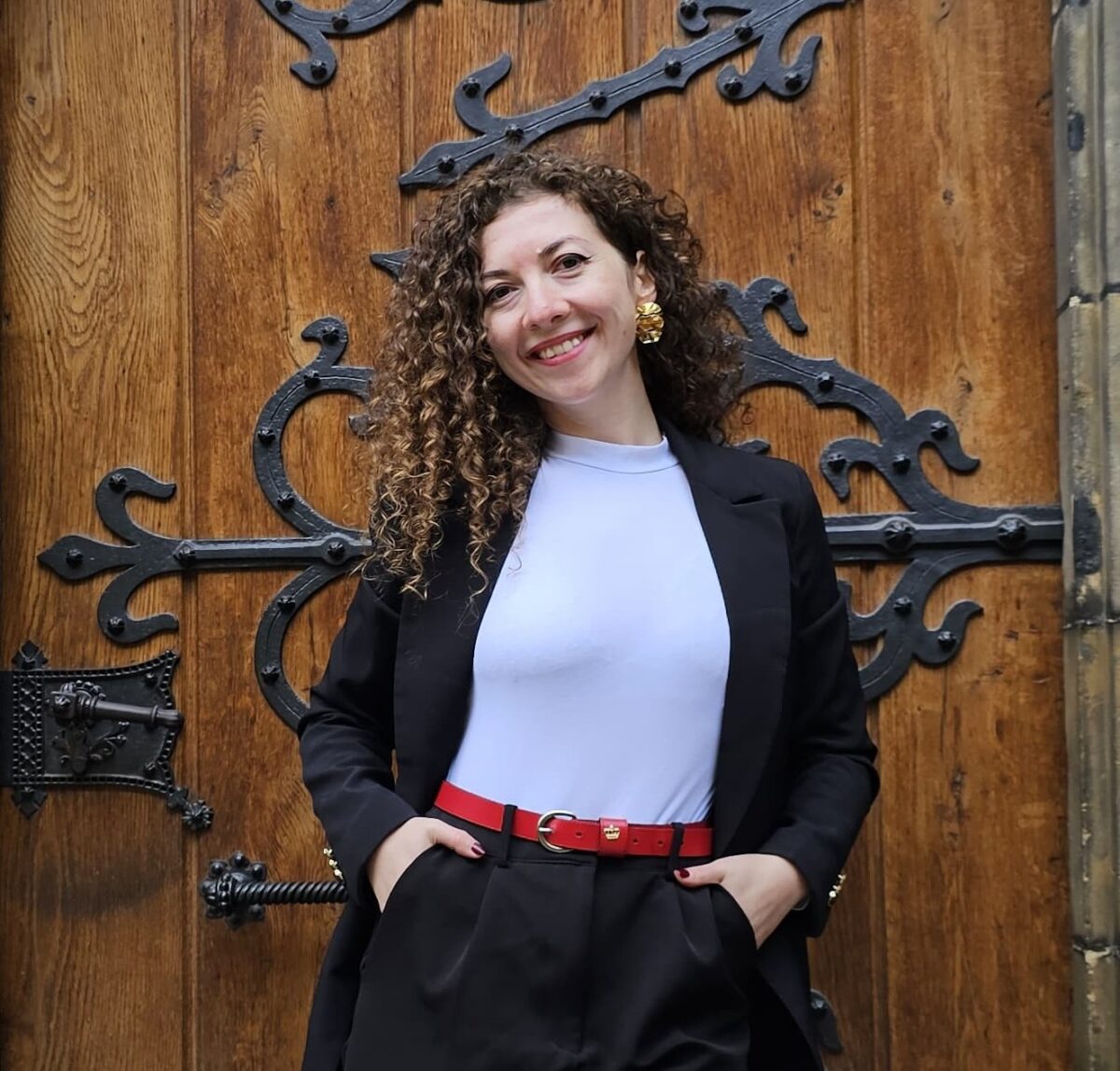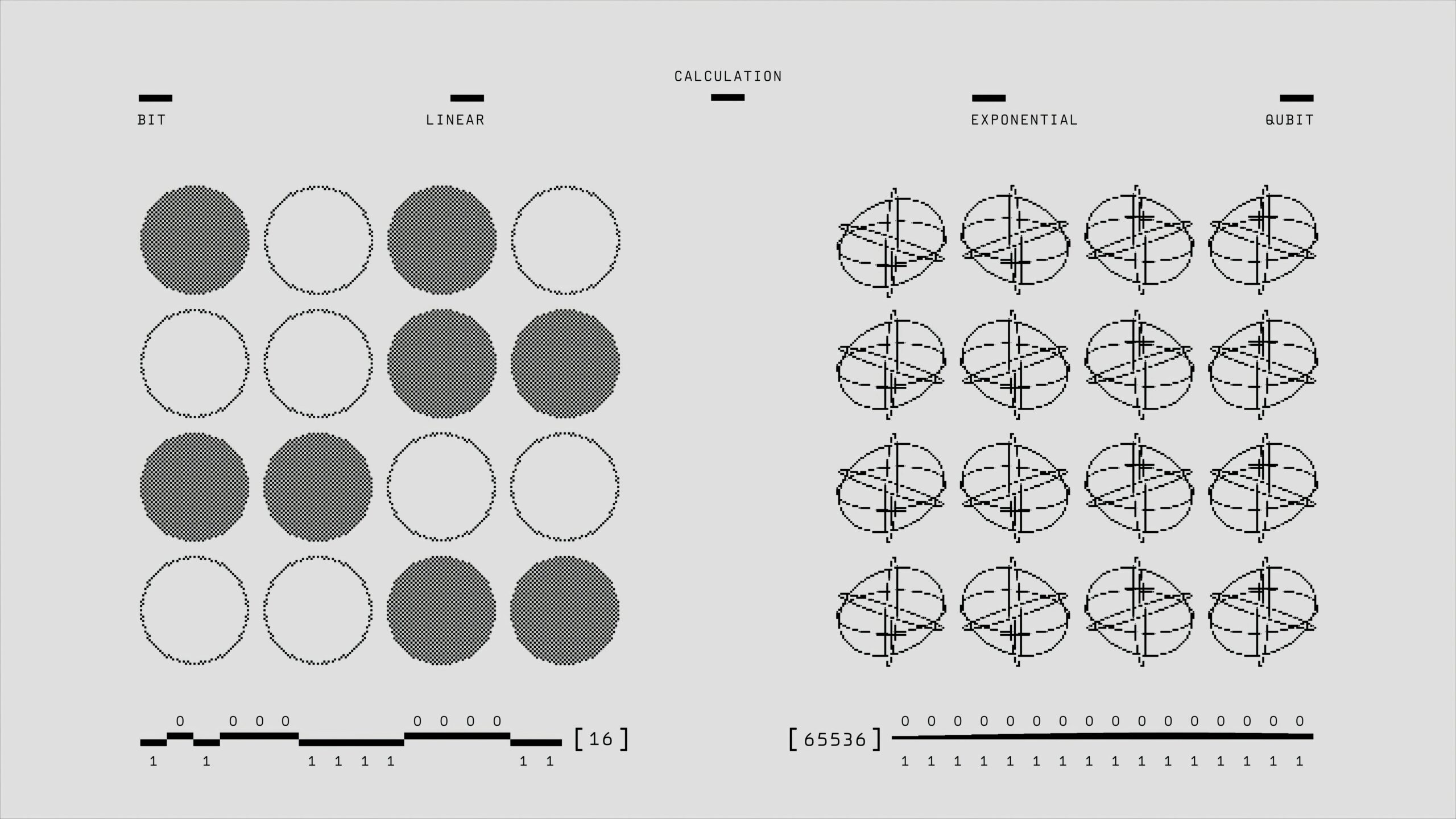Europe aims to lead in quantum technology. We spoke with Stefania-Felicia Pavel, a Horizon Europe Project Manager, about the EU’s strategy. She discusses Europe’s global standing, key policy priorities, and project management in this complex field. Stefania shares insights on funding, challenges, and the future of quantum technology, offering a sharp and savvy perspective on the EU’s ambitious quantum goals.
Hi Stefania! Could you introduce yourself?

My name is Stefania-Felicia Pavel, Romanian by passport, resident of Prague, and European citizen at heart. For more than a decade, I have been on a European journey: Erasmus exchange student, Erasmus Mundus Joint Master Degree graduate, European fellow, and young professional in European funding administration.
For the past five years, I have been working on projects funded by the European Union. In my previous position at the European Development Agency, I have been involved throughout the full project life cycle in tens of projects supported by Erasmus+; Citizens, Equality, Rights and Values CERV; Creative Europe, European Social Fund+, Visegrad Grants, Interreg, COST Action, Horizon Europe, and United Nations funding programmes. The projects spanned topics like life-long learning, employment, arts, culture, social innovation and inclusion, housing, European values, technological upskilling, environment.
If the ambition is to democratise quantum – its development and then accessibility – for academic and industry alike (especially for startups and SMEs), less bureaucracy and more transparency should be prioritised.
In January 2024, I took a bold step towards tech, deep tech, when I started working as a Project Manager in Horizon Europe at AMIRES. Here, I manage two quantum technologies projects: SPINUS (spinus-quantum.eu) and Qu-Test (qu-test.eu). As of October 2024, I also started working as a consultant for proposal writing. I am a certified Project Management Professional PMP since July 2024.
Where does Europe stand, in comparison to other great powers, in the global race for quantum technology?
Europe is positioning itself as a key player in the global quantum race by focusing on quantum sovereignty at home. The EU wants to be the locomotive driving the global quantum ride rather than just jumping on the bandwagon, as it did with Artificial Intelligence (AI). A major step in this direction was the launch of the Quantum Technologies Flagship in 2018, a €1 billion initiative designed to push Europe’s scientific leadership forward. The European Declaration on Quantum Technologies, introduced in December 2023 reaffirmed the EU’s commitment to building a world-class quantum ecosystem. In early 2024, the Strategic Research and Industry Agenda 2030 by Quantum Flagship set a clear roadmap to establish Europe as a global leader in quantum by aligning national and EU-wide R&D efforts.
That said, the U.S. and China lead in certain areas, depending on the technology platform. The U.S. dominates superconducting qubits, thanks to giants like Google and IBM, while China is ahead in quantum communications and sensing. For instance, IBM already avails of a quantum chip with 1000+ qubits, while in Europe, as of March 2024, Finnish company IQM Quantum Computers launched Europe’s first 50-qubit superconducting quantum computer. Thus, to secure Europe’s strategic position, EU funding mechanisms like Horizon Europe and Chips JU (Joint Undertaking) strongly restrict funding access to EU Member States, with exceptions for Iceland, Israel, and Norway. This is done to support European interests and keep intellectual property at home, all while reducing dependency on non-European players. In January 2025, the EU has even proposed a 15-month risk assessment on outbound investments in critical technologies like quantum. The first progress report hereby is expected this July; we shall see then how steady Europe’s pace in the global quantum race is.
What are the main policy priorities for quantum development in the European Union?
The European Union’s main policy priorities for quantum development revolve around technological sovereignty, reducing reliance on non-European supply chains and fostering a strong quantum ecosystem within Europe. One of the core pillars of the EU’s strategy is achieving autonomy in quantum hardware and infrastructure. This means reducing dependence on components sourced from outside Europe. Boosting Europe’s fabrication capabilities is a top priority, as proven by 2024 Chips JU funding calls for establishing Framework Partnership Agreements for developing Quantum Chip Technology for stability and high-quality Pilot Lines.
Another key priority is creating a resilient European quantum supply chain. The EU has learned from past experiences with semiconductors and AI that over-reliance on external suppliers creates vulnerabilities. At the same time, Europe is working on scaling up industrial applications of quantum technologies. The Strategic Research and Industry Agenda 2030 outlines plans to integrate quantum into industries like telecommunications, cybersecurity, and high-performance computing. Finally, the EU is focusing on cross-border collaboration. The European Quantum Communication Infrastructure (EuroQCI) aims to be a secure quantum communication infrastructure spanning the whole EU, including its overseas territories, which will integrate quantum products and systems into conventional communication infrastructures to enhance safe data transmission and cyber resilience.
Tell me about your current role. What are the projects that you coordinate?
At AMIRES, I am both Project Manager and Dissemination & Exploitation Manager. The latter also includes Intellectual Property Rights monitoring and devising commercialization strategies for the key exploitation results emerging from these projects. I manage two Horizon Europe projects in quantum technologies: SPINUS and Qu-Test. SPINUS is focused on research and development of scalable solid-state quantum simulation and computation hardware. Though SPINUS has a lower Technology Readiness Level (TRL), it has potential for solid (state) breakthroughs when it comes to quantum computing at room temperature. Qu-Test is a large-scale project establishing the first European federated testbed for quantum computing, communication, and sensing services. Within this project, we operate an online marketplace which has testing and characterisation services available, as of now for free, for companies in the European quantum ecosystem.
Like any powerful technology, quantum can be a force for good or be misapplied in ways that could have serious consequences. Proportionate regulation will be essential to ensuring its responsible development and use.
So, a quick number crunch: the two projects I manage are four-year long each and have together budgets of 30 million euros. They reunite 150+ team members from tens of leading European Research and Technology Organisations (RTOs).
When it comes to my day-to-day responsibilities, I lead the preparations of the technical and financial reporting, co-manage open calls, plan and attend quantum ecosystem events across Europe, and mediate with the European Commission and the project partners.
Since Autumn 2024, within AMIRES, I also started working on proposal writing.

What are the most important challenges you encounter in your work? How do you deal with them?
As I do not have a background in physics or STEM, one of my key challenges is navigating the highly technical topics. Scientific jargon is dense and effective communication requires translating complex ideas into simple insights for diverse stakeholders. As one of the deepest deep-tech fields, quantum technology demands bridging the gap between researchers and funding bodies without losing accuracy in how the information is conveyed. Also, managing large consortia of 100+ people across Europe is another challenge. While cultural differences are minimal, work priorities vary: a researcher in a clean room has a different definition of work done than a project manager in an office. This causes occasional delays. Additionally, quantum evolves rapidly, often without precedents, requiring flexibility and adaptability. We chart the way as we go.
Since my work follows a deadline-to-deadline continuum, I rely on meticulous planning, incorporating time buffers to manage uncertainties. Fortunately, I collaborate with highly dedicated and responsive scientific coordinators, and this makes my job more effective and enjoyable. Finally, I accept that I will never fully grasp every scientific detail, and my position as a project manager does not require so. At the end of the day, my role is to facilitate collaboration, ensure progress, and enable researchers to push technological boundaries by securing the funding hereby.
In your opinion, what are the biggest risks and benefits associated with quantum technology, for society at large?
Quantum technology offers significant benefits, with real-world applications already emerging. Quantum sensing is advancing biomedical diagnostics, while quantum metrology is finding concrete uses in geodesy. However, some areas, like quantum computing, still require substantial time, resources, and patience before they can impact real-life operations. The risks associated with quantum technologies largely stem from potential misuse. Like any powerful technology, quantum can be a force for good or be misapplied in ways that could have serious consequences. Proportionate regulation will be essential to ensuring its responsible development and use.
One immediate technical risk is the potential for quantum cryptography to break existing encryption protocols, putting financial, medical, and personal data at risk. As a result, we are already entering a new era of cybersecurity, requiring urgent adaptation. Another risk is overhyping the technology. Unrealistic expectations could lead to disillusionment if progress does not meet public or commercial expectations. To avoid this, sustained investment in R&D is critical, ensuring that quantum technologies make the leap from theory to practice in a realistic and meaningful way.
I have come to recognise the people, engage with them with ease and openness irrespective of the gap in knowledge or seniority difference.
How would you describe the European quantum ecosystem?
The European quantum ecosystem is growing, vibrant, and deeply innovation driven. It is shaped by both academia and industry, though academia remains the stronger driver as we transition from fundamental research toward real-world applications. While quantum technologies are still largely in the exploratory phase, steady progress is being made toward integrating them into various industries and service sectors.
The ecosystem is remarkably open to new players, engagement is easy and constructive. Initiatives like the European Quantum Industry Consortium (QuIC) play a crucial role in bringing together the stakeholders regularly. On a personal level, though I have been in the ecosystem for a little more than a year now, after attending events like Quantum Meets and European Quantum Technologies Conference, I have come to recognise the people, engage with them with ease and openness irrespective of the gap in knowledge or seniority difference. The ecosystem, from a human perspective, is very horizontal, welcoming.
Education is also a key pillar, with companies like QURECA making quantum technologies accessible to non-technical professionals. These initiatives help bridge the knowledge gap, enabling broader participation in the field. Ultimately, the European quantum ecosystem goes beyond technological advancement: it is a dynamic, inclusive, and an expanding community.
Which quantum regulations and policy guidelines are currently being prepared at the European level?
Firstly, protection of intellectual property (IP) might be the most critical. Yet, regulating IP in quantum seems to be as complex as quantum physics. Efforts like the “IP Guidelines for Quantum Technologists” by Quantum Flagship Coordination and Support Action (QUCATS) and European Quantum Industry Consortium (QuIC) white paper on the patent landscape in quantum technologies provide a glimpse of what an EU-wide vision for IP in quantum might look like in the future.
Secondly, to ensure interoperability and foster a competitive market, the EU emphasises the development of unified standards for quantum technologies. The CEN-CENELEC Focus Group on Quantum Technologies (FGQT) was established to coordinate and support standardisation efforts, facilitating the growth of efficient supply chains and market structuring. Circling back to my projects, this March, Qu-Test’s work on CEN-CENELEC JTC22 Standardisation Quantum technologies was selected by the European Commission’s Innovation Radar as having high market creation potential.
If you could change one thing about the way European quantum policy is designed, what would it be and why?
One change: cut back on red tape. Dealing with EU funding exposed me to multi-layered, time-consuming processes. Prior to working in the field, I studied EU cohesion policymaking, financial mechanisms, and institutional history for five years and, yet I occasionally struggle to navigate these processes and procedures. If the ambition is to democratise quantum – its development and then accessibility – for academic and industry alike (especially for startups and SMEs), less bureaucracy and more transparency should be prioritised.
One recommendation: festina lente. Hasten slowly. The European Commission should not rush the development, consolidation, and expansion of quantum technologies. It is a race against time and against the other global tech giants. However, rushing the researchers, manufacturers and other key stakeholders might result in incomplete and/or incoherent roadmaps for development. Also, a hefty dose of realism of what can be done with the currently available resources is needed.
Thank you so much! How can people reach out to you?
Thank you for the opportunity. I’d be delighted to connect on LinkedIn !



